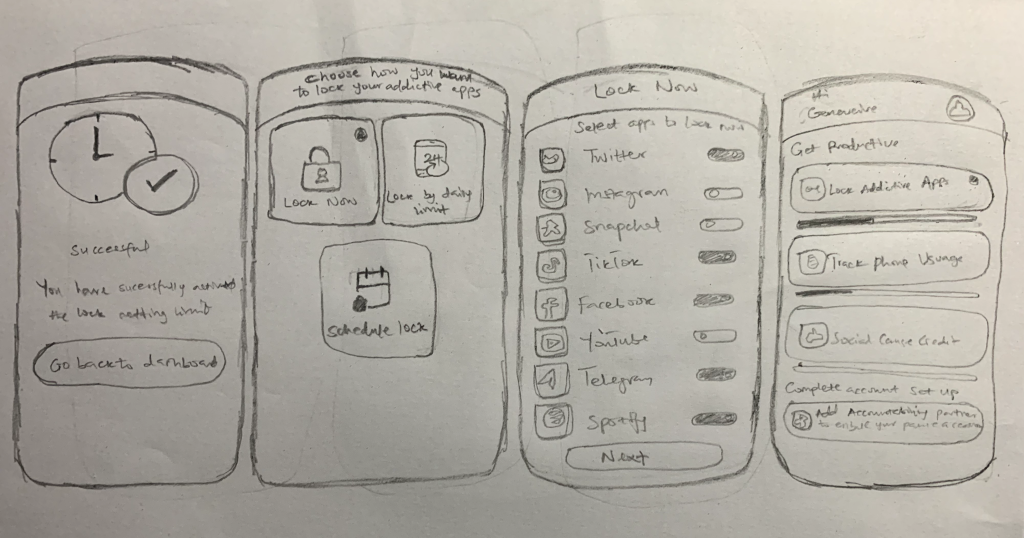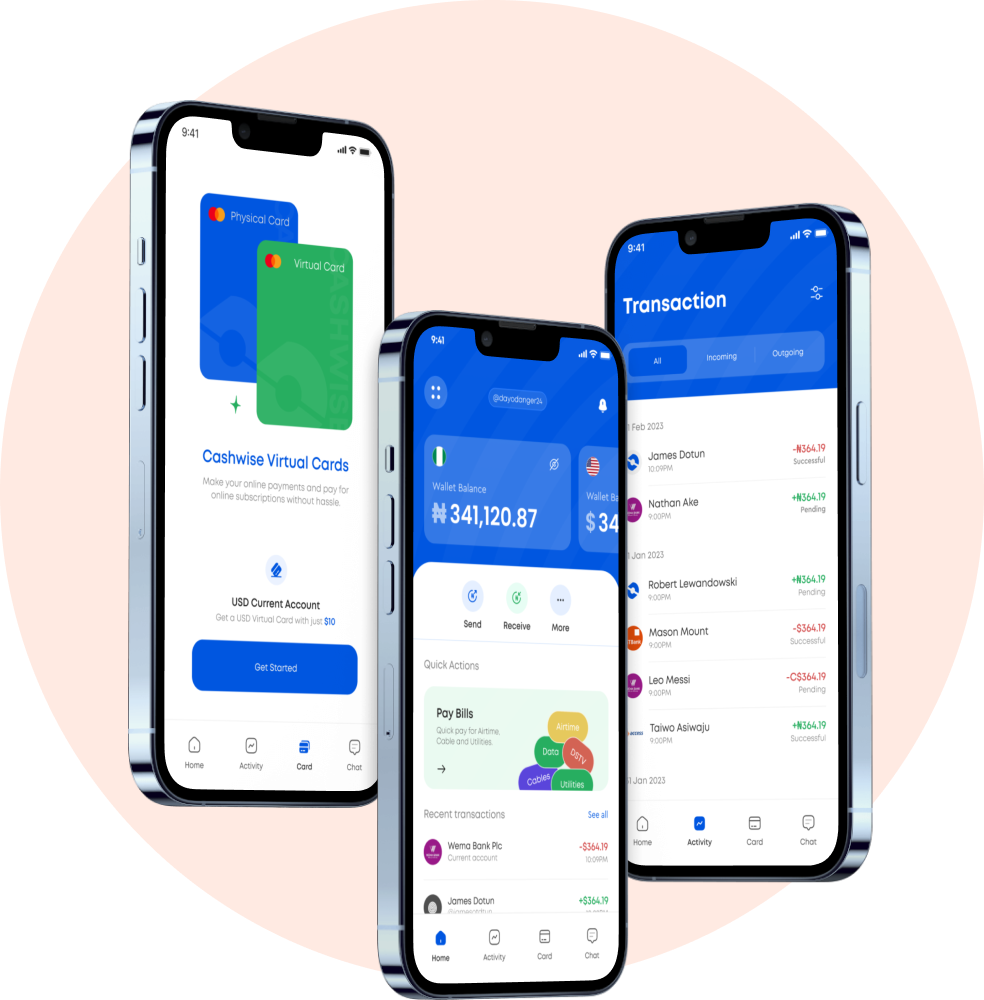
Applatch
A straightforward mobile application that is responsive, designed to lock addictive applications and promote focus and productivity by minimizing distractions from our mobile phones.

My Role
UI Designer
Tools
Figma.
Timeline
4 Weeks
Project Overview
So you know how sometimes you just need to buckle down and focus, but then you find yourself mindlessly scrolling through Instagram or playing Candy Crush? Yeah, we’ve all been there. That’s why Applatch was created- to help users lock those addictive apps for a set period of time, so you can stay on task. Whether you need to study, work on a project, or just want to spend more time in the real world, Applatch has got you covered. You simply set the lock duration and wave goodbye to those distracting apps for a bit.
Product Challenge
Designing an app to lock addictive apps can be a tough task. One of the key challenges is ensuring that the app is intuitive and easy to use, all while packing in powerful features that get the job done. Another challenge is making sure that the app offers enough flexibility to give users the control they need. After all, everyone’s needs are a little different when it comes to staying focused. But with some innovative design and clever features, it’s definitely possible to create an app that helps people achieve their goals and stay focused when they need to.
Project Background
The client, a hardworking entrepreneur and remote worker, was juggling various tasks and trying to balance his work and personal life. Despite having the convenience of working from home, he found that he was struggling to stay focused and meet important deadlines. His personal phone usage was also becoming a major distraction, and he realised that he was spending an average of eight hours per day on his phone, as revealed by his phone analytics.
Determined to tackle this issue and enhance his productivity, the client decided to take matters into his own hands and find a solution to help users manage their time and boost their focus. His vision was to create an app that would enable individuals to overcome their distractions and increase their efficiency, ultimately resulting in better work-life balance.
Throughout the project, the client worked hard to develop and refine the app, ensuring that it would effectively address the needs of busy professionals, remote workers and entrepreneurs like himself. The app comprised a range of features including time tracking, goal setting, task lists, and motivation tools, that could be customised according to individual preferences and needs.
The end goal was to create a sophisticated, user-friendly app that helped users stay on track and achieve their goals, while being mindful of their time and energy.
Design Process

Project Background
The client, a hardworking entrepreneur and remote worker, was juggling various tasks and trying to balance his work and personal life. Despite having the convenience of working from home, he found that he was struggling to stay focused and meet important deadlines. His personal phone usage was also becoming a major distraction, and he realised that he was spending an average of eight hours per day on his phone, as revealed by his phone analytics.
Determined to tackle this issue and enhance his productivity, the client decided to take matters into his own hands and find a solution to help users manage their time and boost their focus. His vision was to create an app that would enable individuals to overcome their distractions and increase their efficiency, ultimately resulting in better work-life balance.
Throughout the project, the client worked hard to develop and refine the app, ensuring that it would effectively address the needs of busy professionals, remote workers and entrepreneurs like himself. The app comprised a range of features including time tracking, goal setting, task lists, and motivation tools, that could be customised according to individual preferences and needs.
The end goal was to create a sophisticated, user-friendly app that helped users stay on track and achieve their goals, while being mindful of their time and energy.
Research
User Interview
The success of any product heavily depends on how well it aligns with the requirements and expectations of its target audience. And this holds even more significance when it comes to designing mobile applications – the world’s most frequently used channel for communication, entertainment, and commerce.
As a designer, I always ensure that I take the necessary steps to understand my client’s vision and their intended users’ needs before starting on any project. In this particular case, my client came to me with a detailed description of her desired outcome and a set of reference features that he aspired to incorporate to his application. Being familiar with both the Android and Apple ecosystems, these references gave me a clear idea of what she was aiming for.
However, I knew that merely following his directives and making an exact copy of the reference features would not be the best approach. I wanted to ensure that the app would cater to the needs and preferences of the intended users while having an intuitive interface that they would easily navigate through.
To execute this while keeping the end-users’ perspectives in mind, I initiated the conduction of user interviews with individuals that were facing similar issues or challenges. And to gain the most valuable insights and perspectives, I made sure to interview people from diverse age groups ranging from the digitally-savvy Gen Z to the fast-paced millennials and the adaptive Generation Alpha.
These interviews allowed me to better understand the challenges that the users were facing in their daily lives and how they interacted with similar applications. Similarly, their feedback and thoughts on what additional features they would love to see translated into valuable insights that shaped the final product.
In conclusion, the user-interview phase is indeed a crucial element of any application development project. Conduction of user research and collecting user feedback is an integral part of designing an application that not only meets the client’s requirements but also resonates with the target user groups. My approach during this phase allowed me to deliver an application that both the client and users were satisfied with.
Competitive Research
After conducting enlightening interviews with like-minded users, I proceeded to analyze the references provided by my client. To gain a comprehensive insight into users’ opinions of the app, I examined key metrics such as usability graphs, addictive app tendencies, and measures of app value. Through this process, I was able to discern critical aspects of Applatch and identify important features that need to be incorporated.
Synthesise
After conducting thorough research through user interviews and a competitive analysis process, I gathered sufficient data which unveiled the vital features that users would prefer to have on the app.
As users become increasingly mindful of their screen time and digital well-being, the need for mobile applications that curb addictive app usage becomes more pressing. To meet this demand, we have identified the major features that users would like to see in an app designed to lock addictive apps.
Firstly, users will appreciate an app that allows them to easily select the apps they find most addictive. This feature should be user-friendly and intuitive, allowing users to quickly identify and select the apps they would like to control. As different individuals may have different apps they find addictive, a customizable feature would fit the bill perfectly.
Secondly, users will like an app that offers a range of locking options. Some may prefer a complete lock-out of the app, while others may prefer timed periods of access. The app should provide the flexibility to set limits that meet each user’s unique needs.
Thirdly, it would be helpful to have a feature that incentivizes users to abide by the limits they have set. This could be in the form of a reward system or a reminder system that tracks progress and encourages adherence to pre-set limits. Gamification strategies can also be incorporated to make the usage limits a fun challenge for users to achieve, rather than a restrictive measure.
Lastly, privacy and security remain of paramount concern. As such, users will like to see a feature that allows them to create a personal passcode or biometric authentication to access the app. Moreover, the app should be uncompromising in maintaining privacy, preventing any sneaky workarounds or backdoors to facilitate app usage.
In sum, an app that offers a customizable selection of addicting apps to lock, a range of locking options, incentivization features, and uncompromising privacy and security measures will likely appeal to users. A well-designed addiction-curtailing app will assist in giving users the freedom they need to use their devices without the associated anxiety of losing control over their time and usage patterns.
Competitive Research
After conducting enlightening interviews with like-minded users, I proceeded to analyze the references provided by my client. To gain a comprehensive insight into users’ opinions of the app, I examined key metrics such as usability graphs, addictive app tendencies, and measures of app value. Through this process, I was able to discern critical aspects of Applatch and identify important features that need to be incorporated.
User Persona



Ideate
User Flow

Low-fi Sketches

Wireframe
Once I had a visual direction of the layout, I started to add more details and precisions to the sketches by turning them into hi-fidelity wireframes. Creating mid-fidelity wireframes helps me have an already laid out view for the prototype, I tried to incorporate common design patterns that have been tested on our competitors’ products, or included elements that directly address users’ goals, needs, frustrations, and motivations.

Hi-Fidelity Wireframes and Prototype

Animated Prototype
Conclusion & Final Thought
Well, folks, it’s been a wild ride, but I think we’ve finally done it. We’ve designed a mobile app that’s going to help people take control of their digital lives and kick those pesky app addictions to the curb!
I have to admit, when I first started this project, I wasn’t sure if we were going to be able to pull it off. But now that I’ve seen the final product, I couldn’t be more proud of what I have accomplished.
I mean, just think about it: all those times we’ve mindlessly scrolled through social media or binged Netflix shows when we should have been sleeping or working…those days are behind us now. With this app, we can set limits on how much time we spend on certain apps and get reminders when we’ve hit our limit.
I know some people might be skeptical about whether an app can make a difference when it comes to addiction, but I truly believe that this one has the potential to change lives. At the end of the day, it’s all about taking small steps to break bad habits and build healthier ones.
So here’s to a brighter future, one where we’re not slaves to our screens and can enjoy the little moments in life without constantly being distracted. This app may just be a small piece of the puzzle, but it’s a damn good one. Cheers!



